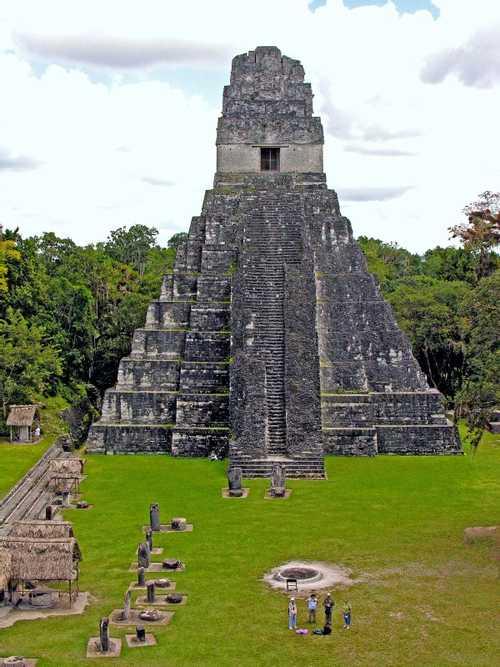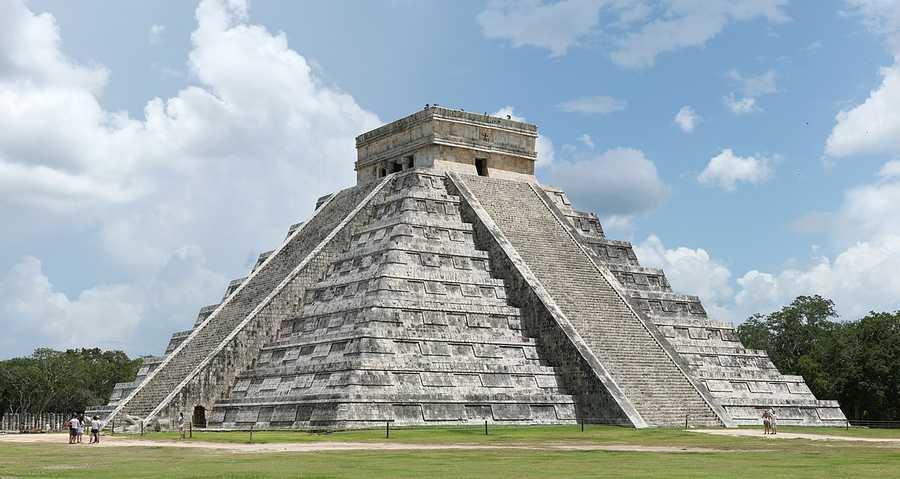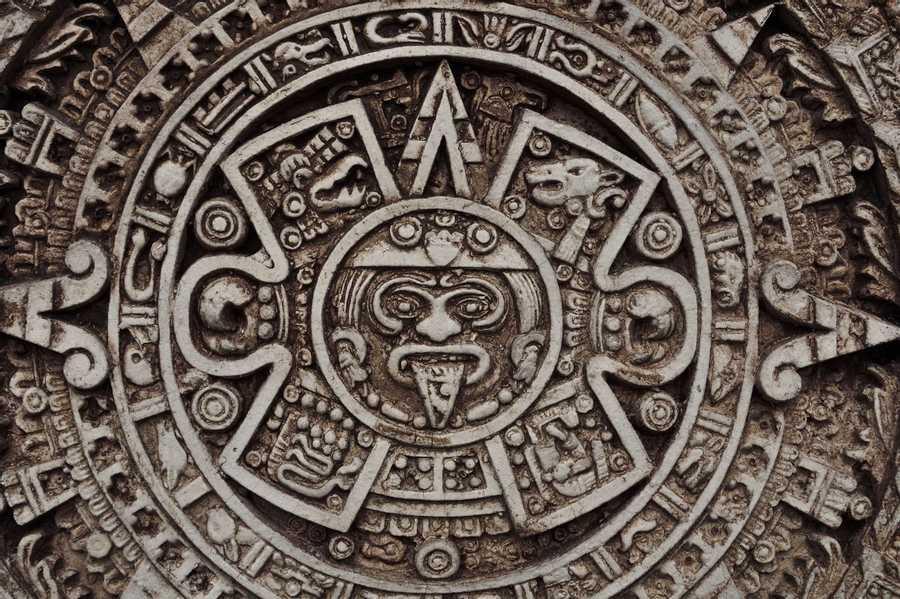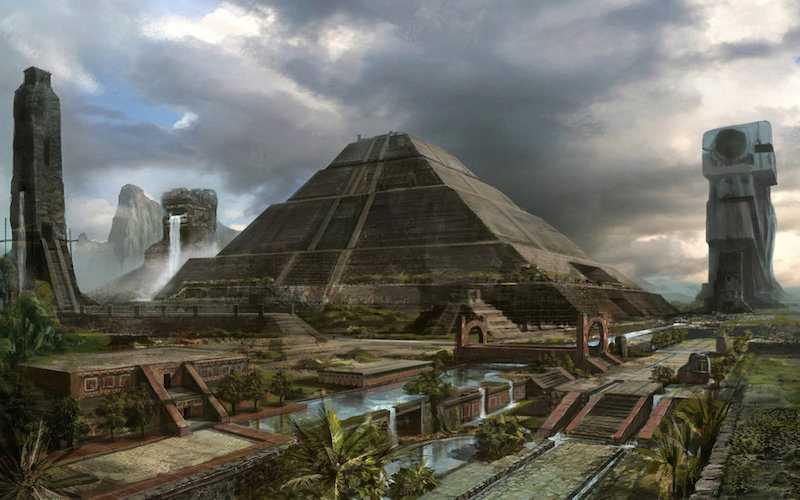The Maya: History, Culture & Religion
Curated from: livescience.com
Ideas, facts & insights covering these topics:
9 ideas
·1.64K reads
14
Explore the World's Best Ideas
Join today and uncover 100+ curated journeys from 50+ topics. Unlock access to our mobile app with extensive features.
The Maya civilisation
- The Maya refer to modern people and to their ancestors who built an ancient civilisation in Central America.
- The Maya civilisation reached its peak during the first millennium A.D. It consisted of many small states that were ruled by kings.
- The Maya people live on today in Central America and throughout the world. They speak many languages including Mayan languages (Yucatec, Quiche, Kekchi and Mopan), Spanish and English.
26
332 reads
The complicated Mayan calendar
The Mayan calendar consisted of eighteen months of twenty days each plus a period of five days ("nameless days") at the end of the year.
This calendar system included a long-count that kept track of time by using different units that varies in length from a single day to millions of years.
26
178 reads
Maya origins
In the Pre-classic period (1800 B.C. to A.D. 250), permanent village life grew and lead to the early Maya cities. The early Maya cities were carefully planned. Nixtun-Ch'ich, in Peten, Guatemala, had pyramids, temples and other structures that were built using a grid system.
Farming became more effective during this period, likely because of the discovery of the "nixtamal" process, where maize is soaked in lime or something similar and cooked to increase the nutritional value. Other crops included squash, bean, chilli pepper and manioc.
25
165 reads
Maya civilisation at its peak
Between A.D. 350 and 900, ancient Maya reached a peak. The civilisations reached intellectual and artistic heights that few could match.
Cities found throughout the Maya world had their individual wonders.
- Tikal is known for its twin pyramids constructed at the end of every K'atun (20-year period).
- Copan is known for its "Temple of hieroglyphic Stairway" - a pyramid-like structure with glyphs on the 63 steps that seem to tell the history of the city's rulers.
- The site of Palenque is known for its limestone sculpture and the burial of one of its kings inside a pyramid.
26
131 reads
The Maya civilisation did not vanish
Many cities were indeed abandoned around 1,100 years ago, including Tikal, Copan and Palenque. A recent study suggests that drought may have played an important role.
But other Maya cities grew for a time, such as Chichén Itzá. Council houses - places where people in a community gathered - flourished after the ninth century. But, when the Spanish arrived, they brought diseases that decimated the Maya. Despite the devastation, the Maya people continue to increase.
24
126 reads
The Maya universe
According to stories recorded by the K'iche Maya, the forefather gods Tepew and Q'ukumatz created the Earth from a watery void and added animals and plants. Eventually, humans were made, including twins, Hunahpu and Xbalanque, who defeated the lords of the underworld. Later, the twins' father, the maize god, was resurrected.
The world consisted of Earth (the domain of the Maya people), sky (the realm of celestial deities), and the watery underworld (the realm of the underworld deities.)
25
194 reads
The Mayan deities
- The Itzamnaaj was lord over the most fundamental opposing forces - life and death, day and night, sky and earth. Itzamnaaj could be depicted as a serpent or two-headed reptile.
- Other deities included the sun-god K'inich Ajaw, the rain and storm god Chaak, and the lightning god K'awiil.
- The Maya believed each person had a 'life force' in their blood, and draining the blood in a temple could give some of this life force to a god.
25
111 reads
The Maya: Record-keeping and astronomy
Record-keeping was essential for agriculture, astronomy and prophecy. By keeping records of the seasons, the Maya could determine the best times to plant and harvest their crops.
Moreover, recording the movements of the sun, moon, planets and stars helped them to develop accurate calendars that they could use for prophecy.
27
276 reads
The Maya: Economy and power
The Maya had a sophisticated economy that could support specialists and a system of merchants and trade routes. They used various objects as currency, including greenstone beads, cacao beans and copper bells.
Maya rulers managed the production and distribution of status goods and critical commodities like salt. Maya labourers were subject to a labour tax to build palaces, temples and public works.
26
129 reads
IDEAS CURATED BY
Thomas Hendricks's ideas are part of this journey:
Learn more about history with this collection
The importance of practice and repetition in learning
How to stay motivated and avoid burnout while learning
How to break down complex concepts into manageable parts
Related collections
Similar ideas
7 ideas
How to Accept Mortality: The History of Memento Mori
dailystoic.com
5 ideas
Centers of Progress: Chichen Itza (Team Sports)
humanprogress.org
6 ideas
Read & Learn
20x Faster
without
deepstash
with
deepstash
with
deepstash
Personalized microlearning
—
100+ Learning Journeys
—
Access to 200,000+ ideas
—
Access to the mobile app
—
Unlimited idea saving
—
—
Unlimited history
—
—
Unlimited listening to ideas
—
—
Downloading & offline access
—
—
Supercharge your mind with one idea per day
Enter your email and spend 1 minute every day to learn something new.
I agree to receive email updates




